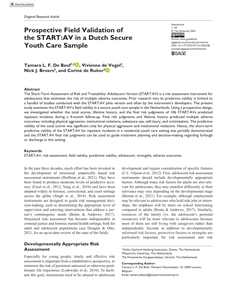This article argues for an updated theoretical framework in fashion studies. It proposes that perspectives emphasizing the social role and the technological nature of dress should be considered complementary, and that their joint application can contribute to new understandings of fashion history. Employing ethnographic methods, this stance is explored through a comparative analysis of the sartorial practices of two groups of women living or working in Amsterdam during the 1950s and the 2010s. A theoretical framework integrating theories of identity (mainly based on the writings of Georg Simmel and Gabriel Tarde) and the philosophy of technology (in this case the device paradigm of Albert Borgmann) allows us to uncover a paradoxical history of fashion in which clothing shifts roles, transforming from “things of imitation” into “devices of differentiation.”
DOCUMENT

RFID technology is a promising technology currently finding its way into the field of customer interaction strategy, supply chain accuracy and inventory management. Primarily, RFID tags are seen as substitutes of traditional barcodes, yet they can add a lot of value and functionality. Where barcodes require a scanning device to be placed directly in front of the tag to be read, RFID tag readers are able to scan all tags that are in the proximity of the scanner . The next difference is that whereas barcodes usually are the same for all articles of the of the same type (i.e. a jar of peanut butter of brand x), RFID tags will be unique for each individual product occurrence. This opens up the possibility of tracking the entire history of a specific occurrence of a product. Moreover, due to the nature of the scanning technology, it suddenly becomes achievable for manufacturers to track individual products through all stages of production and base inventory management and front office planning on real-time data at item level from production facilities.
DOCUMENT

The Short-Term Assessment of Risk and Treatability: Adolescent Version (START:AV) is a risk assessment instrument for adolescents that estimates the risk of multiple adverse outcomes. Prior research into its predictive validity is limited to a handful of studies conducted with the START:AV pilot version and often by the instrument’s developers. The present study examines the START:AV’s field validity in a secure youth care sample in the Netherlands. Using a prospective design, we investigated whether the total scores, lifetime history, and the final risk judgments of 106 START:AVs predicted inpatient incidents during a 4-month follow-up. Final risk judgments and lifetime history predicted multiple adverse outcomes, including physical aggression, institutional violations, substance use, self-injury, and victimization. The predictive validity of the total scores was significant only for physical aggression and institutional violations. Hence, the short-term predictive validity of the START:AV for inpatient incidents in a residential youth care setting was partially demonstrated and the START:AV final risk judgments can be used to guide treatment planning and decision-making regarding furlough or discharge in this setting.
DOCUMENT
